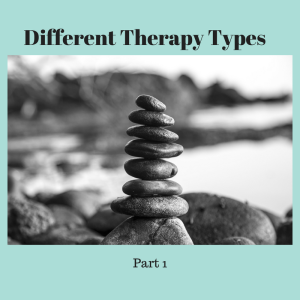 This article will address some of the most commonly used therapies. This will be the first of four blog posts, summarizing major therapeutic styles. Some therapeutic styles are based upon and incorporate other styles.
This article will address some of the most commonly used therapies. This will be the first of four blog posts, summarizing major therapeutic styles. Some therapeutic styles are based upon and incorporate other styles.
Therapy is not a one-size-fits-all approach. Therapists will use a therapeutic method that works well for them and their clients. Most therapists operate from a central therapeutic style. They use specific techniques from other styles as necessary. As a consumer, it’s important to find a therapist who is a good fit for you in both personality and therapeutic style. Just because you like a therapist does not mean they will be a good fit for you. It’s important to talk through expectations and goals to make sure you are both working toward the same thing. Most therapists combine several of these treatments to best suit the needs of the client.
ACT (Acceptance and Commitment Therapy) – This approach blends traditional behavioral and cognitive behavioral therapies. Clients work toward accepting their emotional responses and commit to changing counter-productive behaviors based on their own values. Clients will work on mindful behavior, values-based goals, and commitment towards actions. ACT has been successfully used for anxiety, chronic illness, depression, obsessive-compulsive disorder, psychosis, and stress to name a few.
Attachment-Based Therapy – This brief, process-oriented therapy is based on developing and/or rebuilding trust and learning to appropriately express emotions. Its goal is to build or rebuild trusting supportive relationships to alleviate symptoms of anxiety and depression. It is used with children and adults to overcome the effects of negative attachment issues from early childhood experiences. Attachment therapy is often a component of therapy, rather than a stand-alone approach.
Cognitive Behavioral Therapy (CBT) – The focus of CBT is problem-solving and changing the way one thinks about problems to facilitate a different response. Clients will explore thought patterns and learn to identify realistic vs unrealistic thoughts. CBT is a present moment therapy which focuses on the here and now. It is helpful for adults and children. This is a good therapy if you want specific plans with homework between sessions.
Compassion-Focused Therapy – The focus of this treatment is teaching clients compassion to self and others. It is based on current understanding of the emotional regulation system: the threat and self-protection systems, the drive and excitement systems, and the contentment and social safeness system. The goal is to bring the systems into balance. Clients will practice appreciation, mindfulness, and compassion-focused imagery exercises. Compassion-Focused Therapy is helpful for anger, anxiety, depression, PTSD symptoms, shame, and those who have difficulty feeling, understanding, and/or expressing compassion.
Reference: https://www.psychologytoday.com/us/types-of-therapy
